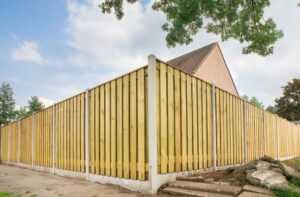The Geography of El Cajon, California
Introduction
El Cajon is a city located in San Diego County, California. With a population of over 100,000 residents, it is the largest city in the East County region of San Diego. El Cajon is known for its diverse geography, featuring mountains, valleys, canyons, and plateaus. This article will provide an overview of the major geographical features and landscapes that define this Southern California city.
Location and Regional Context
El Cajon is situated around 15 miles northeast of downtown San Diego. It is part of the San Diego metropolitan area, the eighth largest metro area in the United States with over 3 million residents. The city is nestled in a valley surrounded by mountains and hills.
Some key facts about El Cajon’s location:
- Located in central San Diego County
- Situated in the foothills of the San Diego mountains
- Approximately 15 miles from downtown San Diego
- Bordered by the cities of Santee, Lakeside, and La Mesa
- Part of the San Diego-Carlsbad Metro Area
- Within the California Floristic Province ecoregion
El Cajon acts as a gateway between San Diego proper and the mountain communities of the Cuyamaca Mountains and Cleveland National Forest. Its strategic location between the mountains and city make it an important suburb within the sprawling San Diego metro region.
Natural Landscapes and Features
Mountains and Hills
El Cajon is surrounded by mountain ranges on multiple sides. To the north are the Iron Mountain range, which rise to over 2,600 feet in elevation. The mountains feature chaparral and sagebrush ecosystems. To the south and east are the foothills of the Cuyamaca Mountains and Laguna Mountains. These rugged mountains contain forests of oak, pine, and fir trees. Popular recreation destinations include El Capitan Reservoir and Mount Gower Open Space Preserve.
Within the city limits, several prominent hills define the landscape. These include Prescott Hill, Knox Hill, and Fletcher Hills in the northern part of the city. Steep slopes and canyons surround these elevated landforms.
Valleys and Canyons
While mountains border El Cajon, the city itself sits in the broad El Cajon Valley. This valley lies between the mountains ranges to the north, east, and south. The valley is part of the larger Santa Maria Valley that extends from San Diego Bay to the San Bernardino Mountains. Gentle slopes and alluvial fans characterize the valley geography.
Several significant canyons also cut through the city. These include Magnolia Canyon, Chase Canyon, and Kelly Canyon. These canyons were formed by erosional processes as streams drained the mountains. Today, some of the canyons contain hiking trails that allow residents to experience the natural landscape.
Plateaus and Mesas
A prominent feature within El Cajon is a large plateau known as Fletcher Hills. This plateau rises steeply from the valley floor on three sides. The level surface of the plateau stretches for over 2.5 square miles. From the top, panoramic views of the city and mountains can be enjoyed. Homes and businesses have been built along the edges and on top of the plateau.
Smaller mesas are also found within the city limits, such as Bostonia Mesa. These elevated flatlands stand out from the sloping valley terrain.
Lakes and Reservoirs
While El Cajon lies in an arid climate, a few man-made lakes dot the landscape. The El Capitan Reservoir is located several miles north of downtown. This large lake is held back by the El Capitan Dam and provides water storage and recreational opportunities. Within the city, Murray and Flinn Reservoirs can be found on the Prescott Hill and Knox Hill plateaus, respectively. Smaller lakes and ponds are also located within some of the area’s golf courses.
Streams and Drainages
El Cajon sits within the San Diego River watershed. The main surface waterway is San Vicente Creek, which flows from the Cuyamaca Mountains west through the city where it joins with Padre Dam municipal reservoir. Tributaries such as Water Falls Creek, Chase Canyon Creek, and Furnace Creek descend through side canyons and ravines to feed into San Vicente Creek. During rains, these normally dry creeks come to life as water drains from the mountains through the city on its way to the Pacific Ocean.
Geology
The mountains surrounding El Cajon consist primarily of Mesozoic granite and metamorphic rock. These formations originated deep underground but were uplifted and exposed through tectonic forces and erosion. The hills within the city are underlain by Cretaceous aged sandstone and shale. In contrast, the valley floor consists of relatively young alluvium sediments deposited by streams. This alternation between hard bedrock and loose sedimentary layers has shaped the varying elevation and drainage patterns around El Cajon.
Notable geological features found in the area include fault lines and earthquake faults caused by seismic activity along the tectonic boundary between the North American and Pacific plates.
Climate
El Cajon has a warm Mediterranean climate, characterized by warm, dry summers and mild, wet winters. Its proximity to the coast has a moderating influence on temperatures compared to inland areas.
Some key aspects of El Cajon’s climate:
- Average summer highs of around 80°F
- Average winter highs of 65°F
- Low annual rainfall of around 12 inches per year
- Most precipitation falls between November and April -Elevation and mountain rain-shadow effects create microclimates across the city
The climate supports chaparral vegetation communities on the hillsides around El Cajon along with agriculture within the valley. While drought tolerant plants thrive, increased urbanization has led to more lush, irrigated landscapes in developed areas.
Natural Hazards
The geography and climate of the region surrounding El Cajon lend themselves to certain natural hazards:
Wildfires
Dry vegetation and Santa Ana winds raise the wildfire risk, especially in late summer/early fall. Fires can spread rapidly in the canyons and on the hillsides during red flag conditions.
Flash Flooding
Burned canyons are prone to flash flooding during heavy winter rains. Debris flows and mudslides are also a concern in steep terrain.
Earthquakes
- Numerous fault lines, including the Elsinore Fault zone, run through or near the city.
- Earthquakes are common but mostly minor.
- Larger quakes could trigger landslides or liquefaction in water-saturated sediment.
Drought
- Lack of rainfall can lead to drought conditions.
- Water shortages and dry vegetation raise fire risk.
- Most water supply comes from outside the city.
Proximity to hazards requires planning and preparedness. Steep slopes, canyons, fault lines, and flammable vegetation combine to make parts of El Cajon vulnerable. But risks can be reduced through preventative measures while the area’s scenic beauty makes it a desirable place to live. Overall, the diverse geography provides both opportunities and challenges for the community.
Major Geographical Zones and Neighborhoods
El Cajon can be divided into distinct zones and neighborhoods based on geography:
Valley Floor
This flat, low-lying zone makes up the western half of El Cajon. It includes the historic downtown as well as residential communities like Wells Park. The Valley Floor provides an urbanized, yet scenic setting against a backdrop of hills and mountains.
Fletcher Hills
Located in the northeast section, this large plateau provides elevated views. Neighborhoods such as Fletcher Hills Estates are situated atop the mesa. Slopes drop steeply on three sides down to the Valley Floor.
Foothills
The southeastern portion of El Cajon lies at the foot of mountains like Mt. Helix. Neighborhoods here include Avocado Mesa and Shadow Mountain Ranch that abut rugged canyons and ravines. The transition between valley city and forested mountains is dramatic.
Canyons
While development covers most of the valley, some canyons contain trails and open space. Magnolia Canyon Natural Area is one such canyon park that preserves native landscapes. These natural areas provide corridors for wildlife movement.
Conclusion
In conclusion, El Cajon enjoys diverse geographical features ranging from urban cityscape to rugged mountains. Its valley setting is defined by surrounding ridgelines. Elevation rises from 500 feet on the Valley Floor to over 2,600 feet in the neighboring mountains. Fault lines and flash floods pose natural hazards.
But varied topography and microclimates also create distinct neighborhoods and scenic beauty. From urban core to untamed canyons, El Cajon’s landscapes provide great opportunities for work, life, and play. Its geography shapes the personality and appeal of this Southern California community.
Service Area
East El Cajon (91919, 92021)
Downtown El Cajon (92020)
Fletcher Hills (92020)
Rancho San Diego (92019)
Casa de Oro (92019)
Bostonia (91919)
Granite Hills (92019)
Pepper Drive (92020)
Lakeside (92040)
Parkway (92020)
Emerald Hills (92020)
West El Cajon (92020)
Fletcher Peak (92020)
Anderson (92020)
Wells Park (92020)
Los Coches Adobe (92019)
Greenfield (92021)
Lexington Hills (92020)
Singing Hills (92019)
Mt Helix (92040)
Hours
Monday: 9:00 AM – 5:00 PM
Tuesday: 9:00 AM – 5:00 PM
Wednesday: 9:00 AM – 5:00 PM
Thursday: 9:00 AM – 5:00 PM
Friday: 9:00 AM – 5:00 PM
Saturday: 9:00 AM – 5:00 PM
Sunday: 9:00 AM – 5:00 PM
Contact Us.
Get Solutions For All Fencing Services
Every day from
9:00 — 5:00
Call to ask any question





